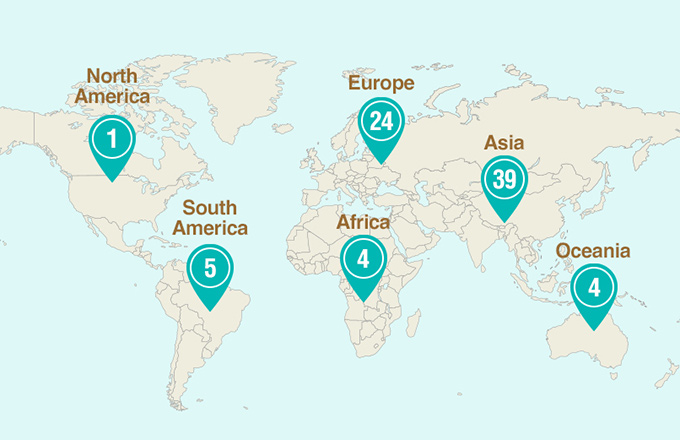Wrestle not with new law - trade's good for people
 |
|
A scene from Dangal [Photo/VCG] |
Two Chinese female colleagues beat me to watching the Indian/Hindi-language movie Dangal (Chinese title: Shuaijiao Ba Baba or Let's Wrestle, Dad) on the big screen in Beijing.
The inspirational movie with Chinese subtitles was released on 7,000 screens on the mainland on May 5, and extended to 3,000 more screens by this week. It's estimated to have raked in 500 million yuan (more than $72 million) so far, topping box office receipts in a market that also exhibits Chinese, English and other language films.
Dangal's success gladdens me. Not because I'm an Indian. Not because an elated young, executive-looking Chinese moviegoer gave me, an Indian stranger, a high-five after a late-evening screening.
I'm glad because Dangal not only confirms that entertainment can be a worthy addition to the growing list of Indian exports to China but gives the lie to the belief that China-India trade would remain uneven and harm India.
This notion first surfaced late last year when misplaced calls, spiked with a nationalistic fervor, erupted in India to boycott Chinese goods due to non-economic issues.
So, the timing of Dangal's success in China, coincidental as it is, seems to suggest that in this age of globalization, cross-border e-commerce, inter-dependent nations and digital wizardry, non-economic issues are a non-issue at the people level.
A law appears to be evolving imperceptibly: just as water would flow according to gravity and surface slope, so would goods, services, ideas, skills and investments flow toward needs, demand and markets. A fine example is the rising number of Indian yoga teachers, software professionals, teachers and researchers in China.
A corollary would be that such "laws" ought not to be messed with using rhetoric or emotion-that will likely result in unintended consequences or prove futile.
During the late 1990s, I used to fancy Woodland, a pricey Canadian-Indian brand of tough, trendy footwear. In February, Woodland tied up with Aokang International to sell its products in the Chinese mainland. Test sales will begin this month at 150 outlets. Eventually, Woodland products will be available at Aokang's 5,000 multi-brand retail shops. Next stop: Hong Kong.
To meet Chinese demand, Woodland factories in three Indian states will expand-which means higher investments and more jobs.
Clearly, there's more to China-India trade and investments than the dominance of Chinese gadgets, devices and appliances in the Indian market.
This was summed up beautifully during the annual "two sessions" in March. Fu Ying, the session's spokeswoman for the national legislature, recalled how one of her colleagues had once mistakenly written $20 billion instead of $2 billion as the value of China-India trade.
"I said at that time that this number was too large, and I could hardly see China-India trade volume reaching $20 billion in the whole of my life. But it reached $70 billion last year (2016)."
Evidence of that spike was on display at the Canton Fair this month where small Indian firms set up stalls to see if they could penetrate the China market. Hafizia, an Indian producer of home furnishings, carpets and rugs, said it will supply to China's Luolai, which operates nearly 3,000 outlets of a department store chain. Hafizia senses opportunities in the rising affluence of China's humongous middle class.
At the fair, Zhang Tao, assistant manager of Hangzhou-based Zhejiang Willing Foreign Trading Co, which exports yoga clothing, told Bloomberg News: "In the past, we thought of India and Pakistan as our competitors. But now we cooperate with them. They're welcome to come to China."
That cooperative spirit, spawned by projects like the Belt and Road Initiative, is now sought to be furthered by India's top industry chamber, whose Shanghai office will organize a business event next month, to guide Chinese enterprises on how to succeed in India.
If a Chinese company learns to succeed in a complex market like India, it would find the going easy in any other economy participating in the Initiative - so goes the logic. Maybe so.
Meanwhile, I'm biding my time to beat my Chinese female colleagues in watching Baahubali-II, another Indian blockbuster, on the big screen in Beijing later this year.























